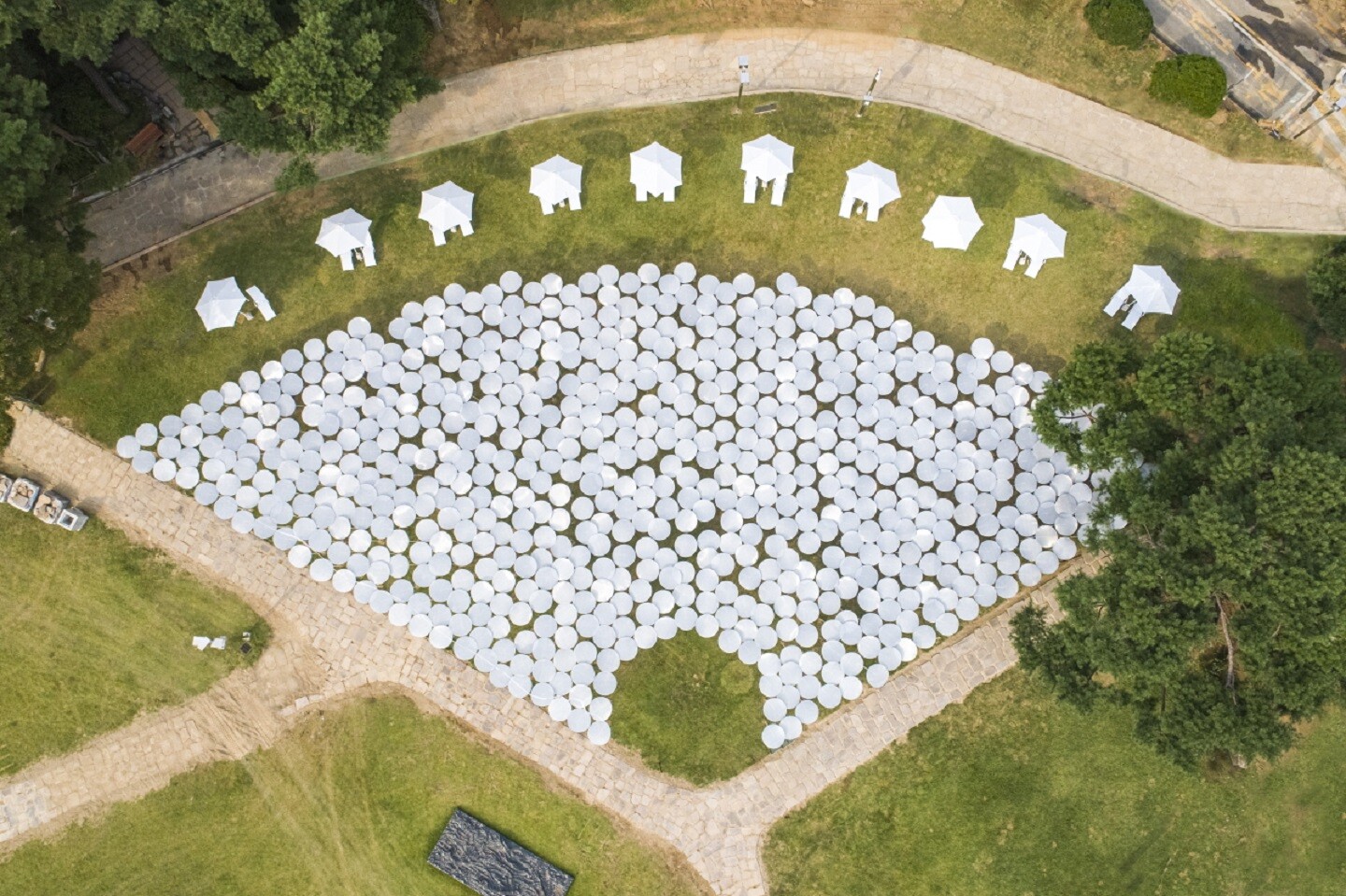MMCA Gwacheon Project 2020
October 8, 2020–May 30, 2021
313 Gwangmyeong-ro, Gwacheon-si
13829 Gyeonggi-do
Republic of Korea
Hours: Tuesday–Sunday 10am–6pm
T +82 2 2188 6000
MMCA Gwacheon Project 2020 was a competition planned by the National Museum of Modern and Contemporary Art as part of its strategy to magnify and expand the key functions of MMCA Gwacheon and revitalize its outdoor space this year. MMCA Gwacheon Project 2020 aimed to present artwork comparable to a resting area in a family-centered outdoor space that anyone, regardless of age, can enjoy as this is one of the major aims of MMCA Gwacheon. Amid the COVID-19 pandemic’s spread globally, the project aimed to reinterpret the locational and conditional circumstances of open, outdoor spaces, offering visitors an environment where they can breathe and rest. With the three keywords “breathe, rest, and joy” in mind, the grassy field in MMCA Gwacheon’s outdoor sculpture garden was transformed into a space for visitors.
The winning artists this year were the architects Seung Teak Lee and Mi Jung Lim of stpmj. The competition’s finalists (four teams), who were chosen through recommendations and a screening process, included this year’s winning artists, stpmj (Seung Teak Lee and Mi Jung Lim), Diagonal Thoughts (Sojin Kang and Sara Kim), CoRe Architects (U Zongxoo and Kim Vin), and Yong Ju Lee Architecture (Yong Ju Lee). stpmj’s work, The Surface, is currently on display as a major installation in the grassy field of the outdoor sculpture garden. The ideation sketches, image synthesis (rendering), videos, and architectural models proposed by the finalists can be viewed at the special exhibition area on the first floor of the museum.
“The Surface is a site-specific and sensually interactive temporary installation. The site selected for MMCA Gwacheon Project 2020 is a public space with an important environmental context: the Cheonggyesan Mountain and Maebongsan Mountain are in the distance, while the splendid landscape architecture of the museum is in close range. The site allows visitors to be in communion with their surroundings as they slowly go up and down the slope of the grass field connected to the nearby mountain trail. The site’s geographic and topographic characteristics interact to communicate with visitors—an important premise of the work. We have imagined a flexible datum that carries at a specific height above the gently sloped grass field. This datum, which permits free movement of people and attracts the flow of sight, becomes a device by which to experience the upper and lower parts of the installation in accord with the different topography of each height on the site. At the highest point of the grass field, visitors experience an endless horizon that reflects the distant and close-range views. When passing through the horizon and heading gradually downwards, visitors experience a man-made forest at the structure’s lower part that has a repetitive arrangement of thin and flexible pillars. The inflection point switches between the domain of the water and forest depending on the eye level of the visitor and appears at random at various places on the site.” –stpmj


